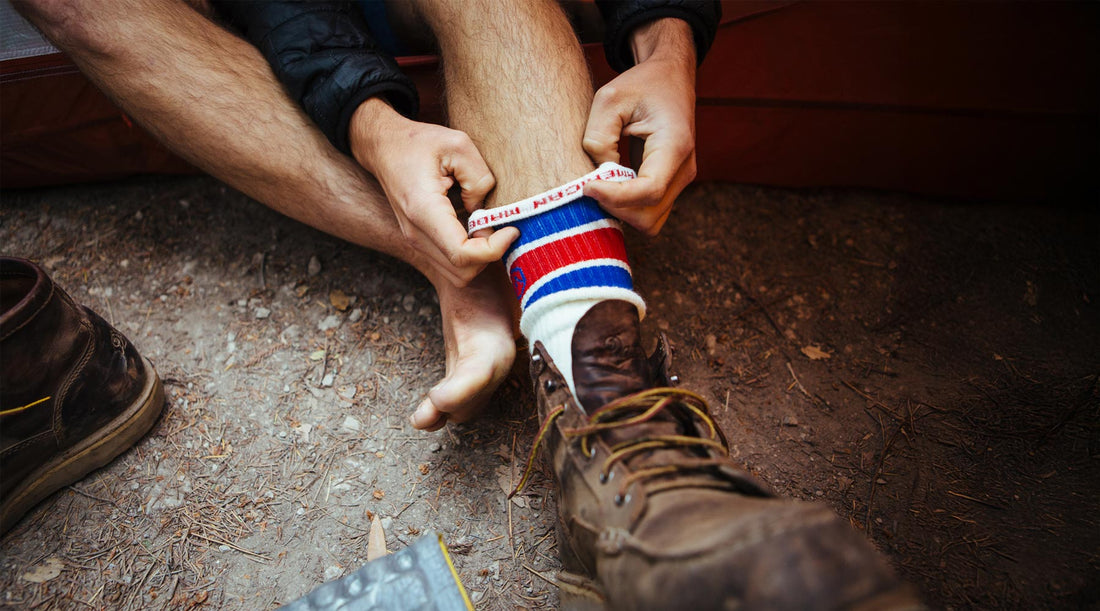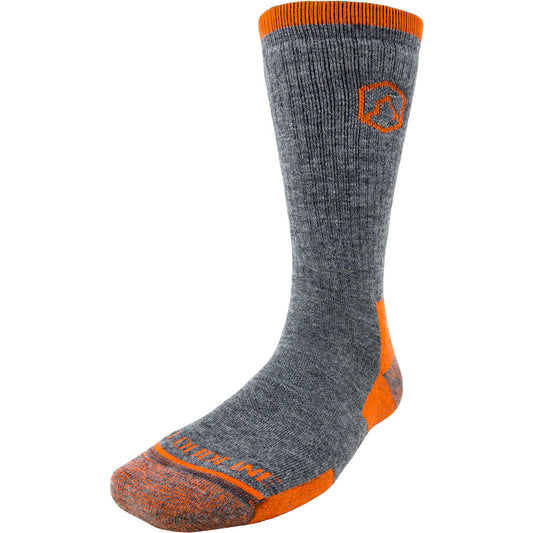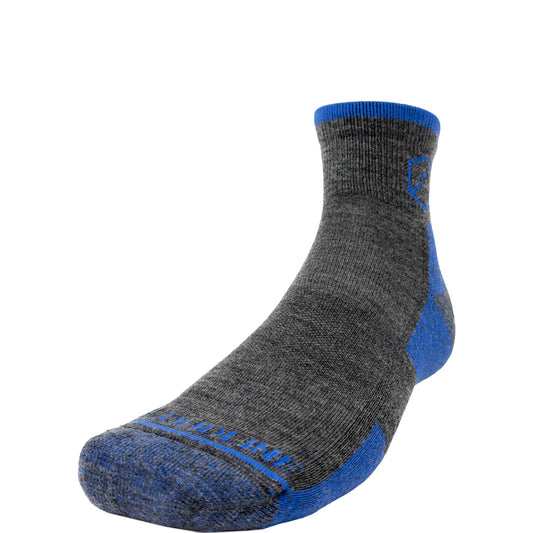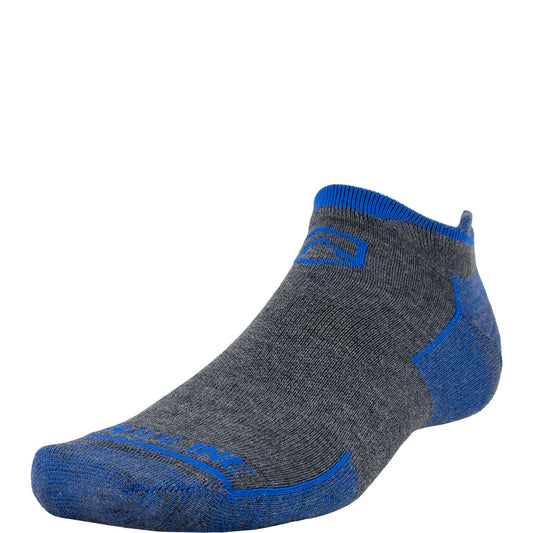
Stay Dry All Day: Discover the Best Moisture Wicking Socks Today!
When your adventures take you far from home, your feet become your most valuable asset. And what protects these vital tools of exploration? Your socks. But not just any socks—moisture wicking socks that keep your feet dry, comfortable, and blister-free through miles of trails, runs, or daily adventures.
Whether you're scaling mountain peaks, running marathons, or simply exploring new cities on foot, the right moisture wicking socks can make the difference between an enjoyable journey and a painful ordeal. Let's dive into what makes these specialized socks essential gear for any active lifestyle, and discover how to choose the best options for your particular adventures.
Why Moisture Wicking Socks Matter
Ever finished a hike with soggy, blistered feet? Or completed a run with uncomfortable hotspots developing? The culprit is almost always excess moisture trapped against your skin. Conventional cotton socks absorb sweat but hold it against your feet, creating the perfect environment for blisters and discomfort.
Moisture wicking socks, however, utilize specialized materials and construction techniques to pull sweat away from your skin and disperse it where it can evaporate quickly. This technology keeps your feet drier, reduces friction, prevents blisters, and creates an inhospitable environment for the bacteria that cause odor.
For outdoor enthusiasts and active individuals, this isn't just about comfort—it's about performance and safety. Wet feet in cold conditions can lead to dangerous situations like trench foot or frostbite, while in warmer conditions, moisture-soaked feet become more vulnerable to blisters and fungal infections.
The Science of Moisture Management
Moisture wicking operates on a principle called "capillary action"—the same phenomenon that allows plants to draw water up from their roots. Specialized synthetic fibers or treated natural fibers create tiny channels that actively pull moisture away from the skin and toward the outer surface of the fabric, where it can evaporate more easily.
This isn't merely about absorption—cotton absorbs moisture quite well but traps it next to your skin. Effective wicking requires both absorption and transportation of moisture, followed by quick-drying capabilities. The most efficacious moisture wicking socks maintain this functionality even during prolonged activity when sweat production is continuous.
Best Materials for Moisture Wicking Socks
Not all moisture wicking materials perform equally. Each fiber type offers distinct advantages for different activities and weather conditions. Understanding these differences helps you select the optimal sock for your specific adventure.
"The right sock material can be as crucial to your outdoor experience as proper footwear. It's the unsung hero of foot comfort during extended adventures."
Merino Wool: Nature's Performance Fiber
Merino wool stands as the pinnacle of natural moisture wicking materials. Unlike traditional wool that can feel scratchy, merino fibers are remarkably fine—often less than 24 microns in diameter—creating a soft, non-irritating experience against skin.
What makes merino extraordinary is its multifunctional nature. It efficiently wicks moisture while simultaneously retaining insulating properties even when damp. The natural crimp in merino fibers creates microscopic air pockets that regulate temperature, keeping feet warm in cold conditions and cool in warm weather.
Merino also contains lanolin, a natural antimicrobial substance that fights odor-causing bacteria. This allows merino wool socks to be worn for multiple days during backpacking trips without developing the notorious "hiker stench" that synthetic options might produce.
At Cloudline, our premium merino wool socks harness these natural properties while enhancing them with thoughtful design and construction techniques, creating a sock that performs exceptionally across varied conditions and activities.
Synthetic Options: Engineered for Performance
Synthetic fibers like polyester, nylon, and polypropylene offer exceptional moisture management through engineered performance. These materials feature hydrophobic properties—they naturally repel water rather than absorbing it—while their construction creates pathways for moisture transportation.
The advantages of synthetics include remarkable durability, expedited drying times, and typically lower cost compared to natural fibers. Many synthetic socks incorporate specialized shapes or textures in the yarns to enhance moisture movement and increase surface area for faster evaporation.
However, synthetics generally can't match the temperature regulation or odor resistance of merino wool. They excel in high-intensity activities where maximum moisture removal is prioritized over comfort or in extremely wet conditions where quick-drying capabilities become paramount.
Blended Fabrics: The Best of Both Worlds
Many premium moisture wicking socks utilize strategic blends that combine natural and synthetic fibers to maximize performance. These hybridized approaches leverage each material's strengths while mitigating their weaknesses.
A common example is merino wool blended with nylon for increased durability and polyester or spandex for enhanced stretch and recovery. These thoughtfully engineered combinations create socks that wick moisture effectively while providing superior comfort, fit, and longevity.
Cloudline's approach incorporates precisely calibrated blends of ultra-fine merino wool with complementary synthetic fibers, achieving the optimal balance between natural comfort and engineered performance for various activity levels and environments.
Features That Define Superior Moisture Wicking Socks
Beyond materials, several design elements significantly impact how effectively a sock manages moisture and provides comfort during activity.
Strategic Cushioning Placement
Effective moisture wicking socks incorporate variable cushioning that provides protection where needed without excessive bulk. Targeted padding in high-impact areas like the heel and ball of the foot enhances comfort without compromising the sock's ability to manage moisture.
The most sophisticated designs utilize different knitting techniques and densities throughout the sock, creating zones of cushioning, ventilation, and support precisely where each is most beneficial. This anatomical approach enhances both comfort and performance while optimizing moisture management.
Seamless Toe Construction
Traditional seams across the toe box create friction points that can lead to blisters, particularly when feet are damp. Advanced moisture wicking socks feature seamless toe closures that eliminate this common irritation source.
Techniques like "linking" or "looping" the toe seam create a virtually undetectable connection that prevents friction while maintaining the sock's structural integrity. This construction method proves particularly valuable during long-distance activities where even minor irritations can escalate into significant issues.
Compression and Support Features
Many premium moisture wicking socks incorporate targeted compression zones that enhance circulation, reduce fatigue, and provide stability during activity. These compression elements often appear in the arch area and sometimes extend to the ankle and lower calf in taller sock styles.
Beyond performance benefits, these support features help maintain proper sock positioning, preventing slippage that could create friction points and blisters. The strategic compression also helps moisture wicking socks retain their shape through numerous wear and wash cycles.
Selecting the Right Moisture Wicking Socks for Your Activity
Different adventures demand different sock features. The ideal moisture wicking sock for a trail run differs significantly from what you'd want for a multi-day backpacking expedition or travel adventure.
Hiking and Backpacking
For trail adventures, prioritize moisture wicking socks with cushioning proportionate to your load and terrain difficulty. Lightweight hikers might prefer thinner socks with moderate cushioning, while those carrying heavy packs or traversing rugged terrain benefit from more substantial padding.
Height becomes a crucial consideration based on your footwear and environmental conditions. Mid-crew or crew heights protect against boot friction and trail debris, while quarter-height options pair well with lighter hiking shoes in less demanding conditions.
For multi-day treks, merino wool's natural odor resistance makes it particularly valuable, as does its ability to regulate temperature across changing conditions and elevations. Consider packing multiple pairs for extended journeys, allowing rotation and drying of socks between wears.
Running and Fitness
Runners require moisture wicking socks that prioritize rapid moisture removal and minimized bulk. Thinner construction with strategic cushioning only where essential allows for better shoe fit and reduced heat buildup.
Lower cut styles typically prevail for running, though trail runners might prefer quarter-height options for additional protection. The sock's ability to stay in place becomes particularly crucial, as movement or bunching during running quickly leads to friction issues.
Synthetics often perform exceptionally well for high-intensity running, though merino wool blends offer advantages for odor control and comfort during longer runs or in variable weather conditions. Some runners prefer the cooling effect of synthetics, while others appreciate merino's temperature regulation capabilities.
Travel and Everyday Adventure
For travel scenarios where versatility reigns supreme, seek moisture wicking socks that balance performance with presentability. Options that perform well across various activities while maintaining a more subdued aesthetic allow for transitioning between adventures and urban exploration.
Merino wool's natural odor resistance makes it particularly valuable for travel when laundry access may be limited. The ability to wear socks for multiple days without odor development significantly reduces the number of pairs needed for extended journeys.
Consider compression features for long flights or travel days when circulation challenges arise from extended periods of sitting. These same support elements enhance comfort during long days of exploration on foot.
Caring for Your Moisture Wicking Socks
Proper maintenance significantly extends the lifespan of performance socks and maintains their moisture wicking capabilities through numerous adventures.
Washing and Drying Best Practices
While premium moisture wicking socks represent a higher initial investment than conventional options, proper care ensures they deliver value through extended performance and durability. Follow these guidelines to maximize your socks' lifespan:
- Turn socks inside-out before washing to allow better cleaning of the surfaces that contact your skin
- Use mild detergents free from fabric softeners, which can coat fibers and impair moisture wicking properties
- Wash in cold or warm water rather than hot, which can damage elastic components and specialized fibers
- Air dry when possible, especially for merino wool options, or use low heat settings if machine drying is necessary
- Avoid bleach and fabric softeners, both of which can significantly degrade performance properties
For outdoor expeditions where traditional washing isn't available, rinsing socks in stream water and allowing them to dry in sunlight can refresh them sufficiently for continued use. Merino wool's natural antimicrobial properties make this approach particularly effective.
Extending Sock Lifespan
Beyond proper washing, several practices help maximize the durability of your moisture wicking socks:
Rotate multiple pairs rather than wearing the same socks consecutively. This allows complete drying between uses and reduces the strain on elastic components. Keep toenails properly trimmed to prevent unnecessary wear on the toe box area. Remove socks by rolling them down rather than pulling from the top, which stresses elastic components.
Address minor damage promptly—small holes can often be repaired before they expand into irreparable issues. Store socks properly between adventures, avoiding prolonged compression or exposure to direct sunlight which can degrade elastic elements.
Frequently Asked Questions About Moisture Wicking Socks
How many pairs do I need for a multi-day hiking trip?
For backpacking adventures, the conventional wisdom suggests packing one pair for every 2-3 days of hiking, plus a dedicated sleeping pair. However, this varies based on conditions, your personal perspiration levels, and sock material.
Merino wool socks can typically be worn for more consecutive days than synthetic options before odor becomes problematic. Some ultralight backpackers manage with just two pairs—one to wear while the other dries after washing. For most hikers, three pairs for a week-long trek provides a good balance between comfort and pack weight.
Are moisture wicking socks worth the higher price?
Premium moisture wicking socks represent an investment in both comfort and performance. While the initial cost exceeds conventional socks, their durability typically delivers better value over time when calculated on a per-wear basis.
More importantly, the performance benefits—reduced blister potential, enhanced comfort, better temperature regulation—can significantly impact your outdoor experiences. Few gear investments affect your comfort as directly and consistently as what comes between your feet and your footwear.
Brands like Cloudline that offer lifetime guarantees further enhance this value proposition, ensuring your sock investment continues delivering performance through countless adventures.
Can moisture wicking socks help with foot odor?
Absolutely. Foot odor primarily results from bacterial growth in moist environments, so moisture management directly impacts odor development. By keeping feet drier, moisture wicking socks create less hospitable conditions for odor-causing bacteria.
Merino wool offers additional advantages through natural antimicrobial properties that actively inhibit bacterial growth. Many users report dramatic reductions in foot odor after switching to quality moisture wicking socks, particularly those made with merino wool.
For maximum odor control, pair moisture wicking socks with breathable footwear and proper foot hygiene practices.
Conclusion: Investing in Adventure-Ready Feet
Your feet carry you through every adventure, and the socks you choose play a crucial role in determining whether those adventures are remembered for the stunning vistas or the painful blisters. Quality moisture wicking socks represent one of the most impactful gear investments available to outdoor enthusiasts.
Whether you're drawn to the natural performance of merino wool, the engineered capabilities of synthetics, or specialized blends that combine the best of both worlds, today's advanced moisture wicking options offer unprecedented comfort and performance.
Cloudline's premium merino wool socks deliver this exceptional performance while being crafted in the USA from the finest materials and backed by a lifetime guarantee. Our designs combine the natural benefits of merino wool with innovative construction techniques to create socks that keep your feet dry, comfortable, and ready for whatever adventure awaits.
Your next great journey starts with the right foundation. Make sure your feet are prepared with moisture wicking socks engineered for performance when it matters most.




